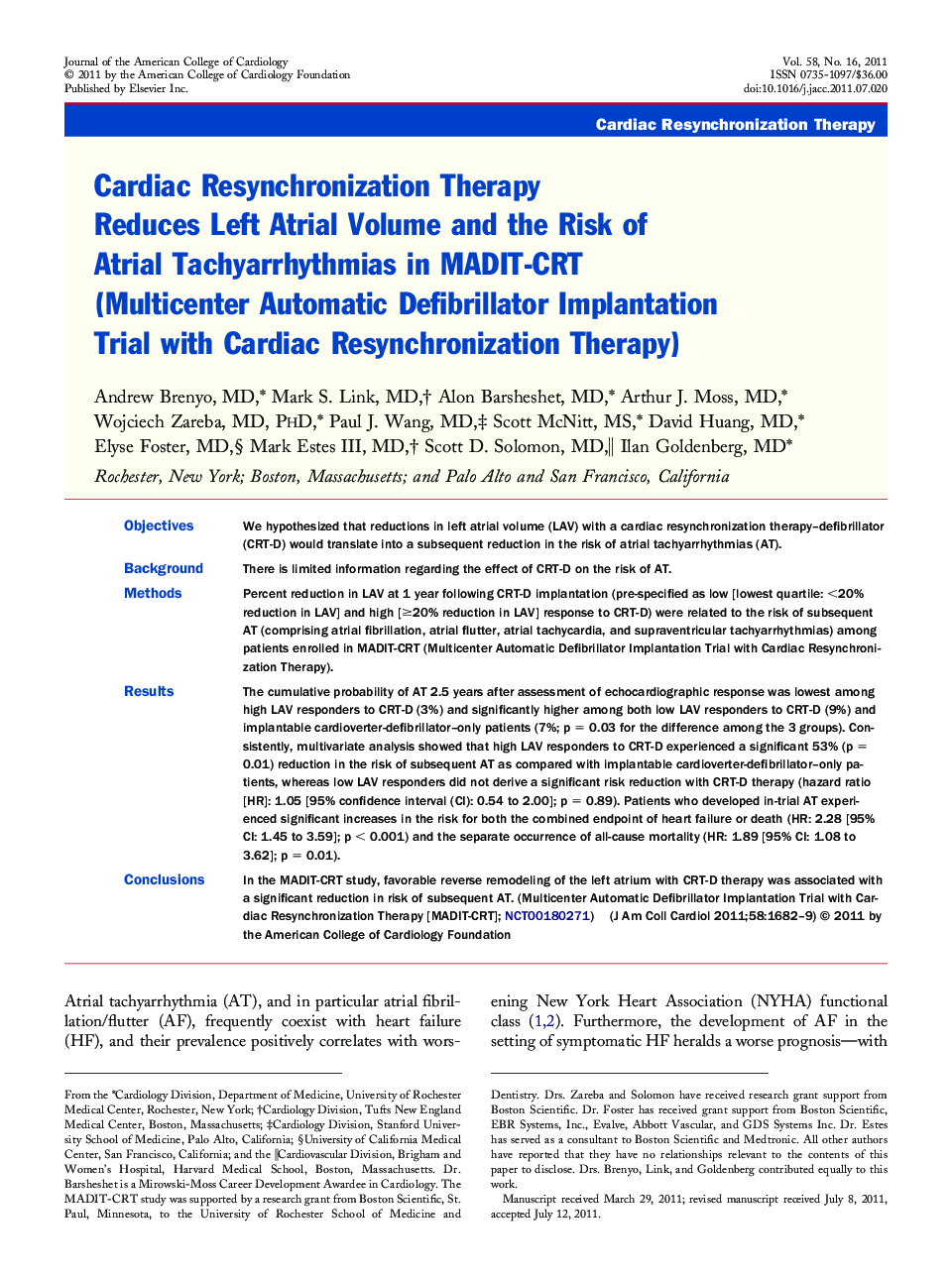| کد مقاله | کد نشریه | سال انتشار | مقاله انگلیسی | نسخه تمام متن |
|---|---|---|---|---|
| 2947677 | 1577243 | 2011 | 8 صفحه PDF | دانلود رایگان |

ObjectivesWe hypothesized that reductions in left atrial volume (LAV) with a cardiac resynchronization therapy–defibrillator (CRT-D) would translate into a subsequent reduction in the risk of atrial tachyarrhythmias (AT).BackgroundThere is limited information regarding the effect of CRT-D on the risk of AT.MethodsPercent reduction in LAV at 1 year following CRT-D implantation (pre-specified as low [lowest quartile: <20% reduction in LAV] and high [≥20% reduction in LAV] response to CRT-D) were related to the risk of subsequent AT (comprising atrial fibrillation, atrial flutter, atrial tachycardia, and supraventricular tachyarrhythmias) among patients enrolled in MADIT-CRT (Multicenter Automatic Defibrillator Implantation Trial with Cardiac Resynchronization Therapy).ResultsThe cumulative probability of AT 2.5 years after assessment of echocardiographic response was lowest among high LAV responders to CRT-D (3%) and significantly higher among both low LAV responders to CRT-D (9%) and implantable cardioverter-defibrillator–only patients (7%; p = 0.03 for the difference among the 3 groups). Consistently, multivariate analysis showed that high LAV responders to CRT-D experienced a significant 53% (p = 0.01) reduction in the risk of subsequent AT as compared with implantable cardioverter-defibrillator–only patients, whereas low LAV responders did not derive a significant risk reduction with CRT-D therapy (hazard ratio [HR]: 1.05 [95% confidence interval (CI): 0.54 to 2.00]; p = 0.89). Patients who developed in-trial AT experienced significant increases in the risk for both the combined endpoint of heart failure or death (HR: 2.28 [95% CI: 1.45 to 3.59]; p < 0.001) and the separate occurrence of all-cause mortality (HR: 1.89 [95% CI: 1.08 to 3.62]; p = 0.01).ConclusionsIn the MADIT-CRT study, favorable reverse remodeling of the left atrium with CRT-D therapy was associated with a significant reduction in risk of subsequent AT. (Multicenter Automatic Defibrillator Implantation Trial with Cardiac Resynchronization Therapy [MADIT-CRT]; NCT00180271)
Journal: Journal of the American College of Cardiology - Volume 58, Issue 16, 11 October 2011, Pages 1682–1689